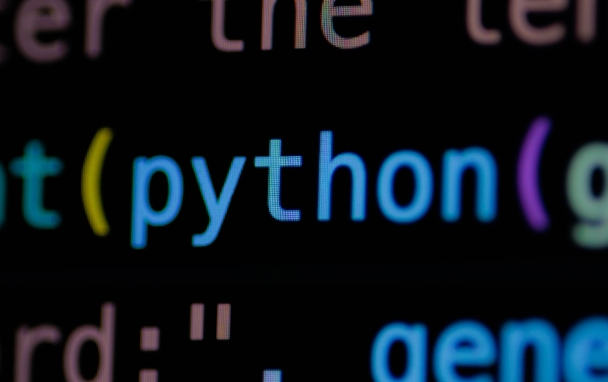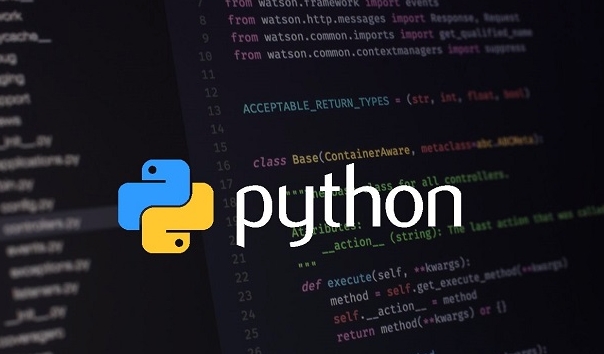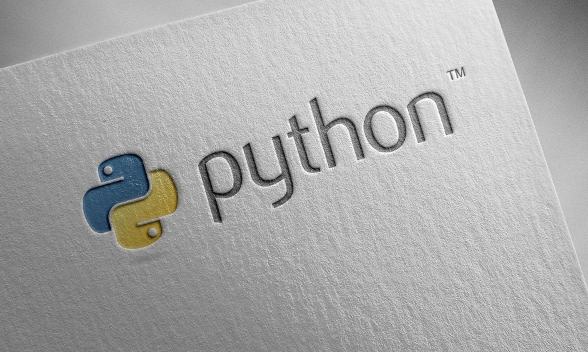Using classes as decorators is more flexible and suitable for saving state or complex logic. Its core lies in: 1. Init initialization parameters of the class; 2. Call handles function calls; 3. Supports parameter decoration, and needs to be packaged with another layer; 4. It can record status, extension functions, and multi-layer encapsulation; 5. Meta information is not retained by default, and can be repaired by functools.wraps.

Using Python classes as decorators is actually a little more complicated than function decorators, but after understanding them, you will find that it is more flexible, especially suitable for scenarios where state or logic is complex.

Why use classes as decorators?
A decorator is essentially a thing that "accepts a function and returns a new function". Usually we use functions to write decorators, but sometimes you hope that the decorator itself can remember some states, or multiple methods work together, so using classes is more advantageous.

For example, if you want to record how many times a function has been called, or if you want to pass parameters and keep them in state during decoration, the use of classes will be clearer. The __init__ method of the class can initialize parameters, while the __call__ method is used to handle calls to decorated functions.
How to write a class decorator?
The most basic structure is as follows: define a class and implement __init__ and __call__ methods.

class MyDecorator:
def __init__(self, func):
self.func = func
def __call__(self, *args, **kwargs):
print("Decorator Pre-Operation")
result = self.func(*args, **kwargs)
print("Decorator Post-Operation")
return result
@MyDecorator
def says_hello():
print("Hello")
say_hello() If written in this way, the decorator can only be used for functions and cannot take parameters. If you want to pass parameters like @decorator(arg1=value) , you have to include another layer:
class MyParamDecorator:
def __init__(self, param=None):
self.param = param
def __call__(self, func):
def wrapped(*args, **kwargs):
print(f"Decorator Parameters: {self.param}")
return func(*args, **kwargs)
Return wrapped
@MyParamDecorator(param="test")
def do_something():
print("Execution")
do_something() The key to this writing is: when you use a decorator with parameters, Python first calls the class __init__ , and then uses the returned instance as the decorator and then calls __call__ .
Common uses and suggestions
- Record status : For example, count how many times a function has been called.
- Extended function : Add logs, permission checks, etc. without modifying the original function.
- Multi-layer encapsulation : Classes can have multiple methods to facilitate organizational logic.
If you just make some simple wrappers, function decorators are enough; but once state management or complex logic is involved, the advantages of decorator-like decorator will be reflected.
In addition, it is important to note:
- Decorators written by class decorators do not retain the meta information of the original function by default (such as
__name__), and can be fixed withfunctools.wraps. - If you are not familiar with the role of
__call__, you can start with the function decorator and slowly transition to class writing.
Ending
In general, although the class-writing decorator in Python seems a little bit in a bit at the beginning, it has a clear structure and strong scalability, especially when facing scenarios where states need to be maintained. After mastering this technique, you will find that many advanced Curry decorator logics are easier to understand.
Basically that's it.
The above is the detailed content of Python class decorator usage. For more information, please follow other related articles on the PHP Chinese website!

Hot AI Tools

Undress AI Tool
Undress images for free

Undresser.AI Undress
AI-powered app for creating realistic nude photos

AI Clothes Remover
Online AI tool for removing clothes from photos.

Clothoff.io
AI clothes remover

Video Face Swap
Swap faces in any video effortlessly with our completely free AI face swap tool!

Hot Article

Hot Tools

Notepad++7.3.1
Easy-to-use and free code editor

SublimeText3 Chinese version
Chinese version, very easy to use

Zend Studio 13.0.1
Powerful PHP integrated development environment

Dreamweaver CS6
Visual web development tools

SublimeText3 Mac version
God-level code editing software (SublimeText3)
 PHP calls AI intelligent voice assistant PHP voice interaction system construction
Jul 25, 2025 pm 08:45 PM
PHP calls AI intelligent voice assistant PHP voice interaction system construction
Jul 25, 2025 pm 08:45 PM
User voice input is captured and sent to the PHP backend through the MediaRecorder API of the front-end JavaScript; 2. PHP saves the audio as a temporary file and calls STTAPI (such as Google or Baidu voice recognition) to convert it into text; 3. PHP sends the text to an AI service (such as OpenAIGPT) to obtain intelligent reply; 4. PHP then calls TTSAPI (such as Baidu or Google voice synthesis) to convert the reply to a voice file; 5. PHP streams the voice file back to the front-end to play, completing interaction. The entire process is dominated by PHP to ensure seamless connection between all links.
 How to use PHP combined with AI to achieve text error correction PHP syntax detection and optimization
Jul 25, 2025 pm 08:57 PM
How to use PHP combined with AI to achieve text error correction PHP syntax detection and optimization
Jul 25, 2025 pm 08:57 PM
To realize text error correction and syntax optimization with AI, you need to follow the following steps: 1. Select a suitable AI model or API, such as Baidu, Tencent API or open source NLP library; 2. Call the API through PHP's curl or Guzzle and process the return results; 3. Display error correction information in the application and allow users to choose whether to adopt it; 4. Use php-l and PHP_CodeSniffer for syntax detection and code optimization; 5. Continuously collect feedback and update the model or rules to improve the effect. When choosing AIAPI, focus on evaluating accuracy, response speed, price and support for PHP. Code optimization should follow PSR specifications, use cache reasonably, avoid circular queries, review code regularly, and use X
 python seaborn jointplot example
Jul 26, 2025 am 08:11 AM
python seaborn jointplot example
Jul 26, 2025 am 08:11 AM
Use Seaborn's jointplot to quickly visualize the relationship and distribution between two variables; 2. The basic scatter plot is implemented by sns.jointplot(data=tips,x="total_bill",y="tip",kind="scatter"), the center is a scatter plot, and the histogram is displayed on the upper and lower and right sides; 3. Add regression lines and density information to a kind="reg", and combine marginal_kws to set the edge plot style; 4. When the data volume is large, it is recommended to use "hex"
 PHP integrated AI emotional computing technology PHP user feedback intelligent analysis
Jul 25, 2025 pm 06:54 PM
PHP integrated AI emotional computing technology PHP user feedback intelligent analysis
Jul 25, 2025 pm 06:54 PM
To integrate AI sentiment computing technology into PHP applications, the core is to use cloud services AIAPI (such as Google, AWS, and Azure) for sentiment analysis, send text through HTTP requests and parse returned JSON results, and store emotional data into the database, thereby realizing automated processing and data insights of user feedback. The specific steps include: 1. Select a suitable AI sentiment analysis API, considering accuracy, cost, language support and integration complexity; 2. Use Guzzle or curl to send requests, store sentiment scores, labels, and intensity information; 3. Build a visual dashboard to support priority sorting, trend analysis, product iteration direction and user segmentation; 4. Respond to technical challenges, such as API call restrictions and numbers
 python list to string conversion example
Jul 26, 2025 am 08:00 AM
python list to string conversion example
Jul 26, 2025 am 08:00 AM
String lists can be merged with join() method, such as ''.join(words) to get "HelloworldfromPython"; 2. Number lists must be converted to strings with map(str, numbers) or [str(x)forxinnumbers] before joining; 3. Any type list can be directly converted to strings with brackets and quotes, suitable for debugging; 4. Custom formats can be implemented by generator expressions combined with join(), such as '|'.join(f"[{item}]"foriteminitems) output"[a]|[
 python connect to sql server pyodbc example
Jul 30, 2025 am 02:53 AM
python connect to sql server pyodbc example
Jul 30, 2025 am 02:53 AM
Install pyodbc: Use the pipinstallpyodbc command to install the library; 2. Connect SQLServer: Use the connection string containing DRIVER, SERVER, DATABASE, UID/PWD or Trusted_Connection through the pyodbc.connect() method, and support SQL authentication or Windows authentication respectively; 3. Check the installed driver: Run pyodbc.drivers() and filter the driver name containing 'SQLServer' to ensure that the correct driver name is used such as 'ODBCDriver17 for SQLServer'; 4. Key parameters of the connection string
 python pandas melt example
Jul 27, 2025 am 02:48 AM
python pandas melt example
Jul 27, 2025 am 02:48 AM
pandas.melt() is used to convert wide format data into long format. The answer is to define new column names by specifying id_vars retain the identification column, value_vars select the column to be melted, var_name and value_name, 1.id_vars='Name' means that the Name column remains unchanged, 2.value_vars=['Math','English','Science'] specifies the column to be melted, 3.var_name='Subject' sets the new column name of the original column name, 4.value_name='Score' sets the new column name of the original value, and finally generates three columns including Name, Subject and Score.
 Optimizing Python for Memory-Bound Operations
Jul 28, 2025 am 03:22 AM
Optimizing Python for Memory-Bound Operations
Jul 28, 2025 am 03:22 AM
Pythoncanbeoptimizedformemory-boundoperationsbyreducingoverheadthroughgenerators,efficientdatastructures,andmanagingobjectlifetimes.First,usegeneratorsinsteadofliststoprocesslargedatasetsoneitematatime,avoidingloadingeverythingintomemory.Second,choos






